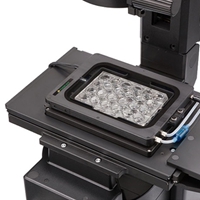更快速的MRI技术面世,大大缩短成像时间
互联网
- 相关专题
为了能够进行慢速扫描,医生们一直在和那些活泼好动的儿童作斗争。不过现在,美国加利福尼亚大学伯克利分校的Michael Lustig和同事研制出更快速的磁共振成像(MRI)技术,医生们可能不用再焦虑如何让自己的病人保持长时间的静止了。2月19日研究人员在加拿大温哥华举行的美国科学促进会年会上报告了这一研究成果。
上图显示通过这一技术对一名6岁先天性心脏病患者的心脏血流情况进行的成像仅需要10分钟,而非传统MRI所需的1个小时。
为了进行更快速的成像,研究人员采用了与JPEG压缩类似的算法。所谓的压缩传感MRI在时间和空间上提供了一种拍摄软组织图像的更快速的途径。与捕捉所有的数据点不同,这项技术会随机地记录数据,进而绘制出一个稀疏的图像。
这种不完整的图像在扫描后会由显示每个像素最简单的解决方案的算法进行填充。
虽然研究人员仍在完善这种快速扫描技术,但有少数诊所已经开始用它来削减扫描时间了。
原文摘要:
science Shot: Medical Imaging, In A Snap
VANCOUVER, CANADA—Doctors struggle to keep squirming children still for long scans. Now, thanks to faster magnetic resonance imaging (MRI), they may no longer have to worry about keeping their patients still for so long. The above image of the blood flow through the heart of a 6-year-old with a congenital heart defect was acquired in 10 minutes rather than an hour, as with traditional MRI. To take faster images, researchers use algorithms similar to JPEG compression, they reported here today at the annual meeting of the American Association for the Advancement of science (which publishes ScienceNOW). So-called compressed sensing MRIs offer a quicker way to snap pictures of soft tissues in time and space. Instead of capturing all data points, this technique records data randomly, drawing a sparse image. The incomplete pictures are filled in after the scan by algorithms that reveal the simplest solution for each pixel. While researchers are still perfecting this quick scanning method, a handful of clinics are already using it to slash scan times.



![2,4-二氯-1-萘酚[用于照相技术],2050-76-2,≥97%(GC)(T),阿拉丁](https://img1.dxycdn.com/p/s14/2024/0619/923/2131019441498633081.jpg!wh200)





